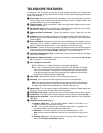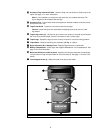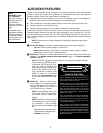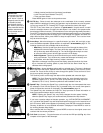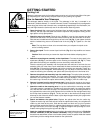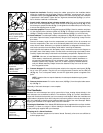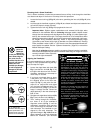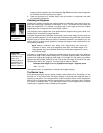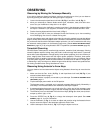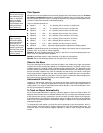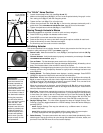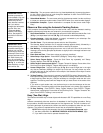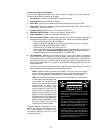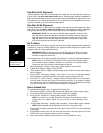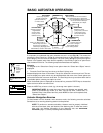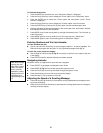
15
OBSERVING
Observing by Moving the Telescope Manually
If you wish to observe a distant land object, such as a mountain top or a bird, you can observe
by merely pointing the telescope and looking through the eyepiece.
1. Loosen the telescope’s tripod base lock knob (26, Fig. 1) and Dec. lock (6, Fig. 1).
2. Move your telescope to observe distant street signs, mountains, trees, and other struc-
tures. Use your viewfinder to help site-in on an object.
3. Center the object in the viewfinder’s crosshairs and then in the telescope eyepiece. When
the object is centered in your eyepiece, remember to re-tighten the base and Dec. locks.
4. Practice focusing objects with the focus knob (1, Fig. 1).
5. Once you get a feel for how your telescope moves and focuses, try to view something
more challenging, like a bird or a distant moving train.
You can also observe stars and objects in the night sky using this method, but note that objects
begin to slowly drift across the eyepiece field. This motion is caused by the rotation of the Earth.
As you become familiar with the Autostar handbox operation, you can counteract the drift using
the automatic tracking feature in the Autostar Setup menu (see
TO TRACK AN OBJECT AUTO-
MATICALLY, page 16), or by using Autostar's GO TO capabilities (see GO TO SATURN, page 20).
Terrestrial Observing
DS-2000 Series Telescopes are excellent high-resolution, terrestrial (land) telescopes. Viewing
terrestrial objects requires looking along the Earth's surface through heat waves. These heat
waves often cause degradation of image quality. Lower power eyepieces, such as a 25mm eye-
piece, magnify these heat waves less than higher power eyepieces. Therefore, lower power
eyepieces provide a steadier, higher quality image. If the image is fuzzy or ill-defined, reduce
to a lower power eyepiece, where the heat waves do not have such an effect on image quali-
ty. Observing in early morning hours, before the ground has built up internal heat, produces bet-
ter viewing conditions than during late afternoon hours.
Observing Using Autostar's Arrow Keys
You may observe land and astronomical objects using Autostar's Arrow keys to move the tele-
scope.
1. Make sure that the Dec. locks (10, Fig. 1) and tripod base lock knob (26, Fig. 1) are
secured as described on page 11.
2. Verify that Autostar is properly connected to your telescope. See
HOW
TO ASSEMBLE YOUR
TELESCOPE,
page 11.
3. Flip the telescope power switch to the ON position.
The Autostar screen is activated and a copyright message displays briefly, followed by a
short beep. Then Autostar takes a few moments to start up the system.
4. A message displays that warns not to look at the Sun. At the end of this message, press
the key prompted by Autostar to signify that the message has been read and understood.
5. The Arrow keys are now activated. Press the Arrow keys (5, Fig. 2) to slew (move) the tel-
escope up, down, right, or left.
6. Press the SPEED/? key (8, Fig. 2) to change the telescope’s slew speed. See
SLEW
SPEEDS, page 16, for more information.
7. Use the viewfinder (7, Fig. 1) to locate an object and practice using the Autostar’s Arrow
keys to center the object in the telescope eyepiece's field of view.
8. Use the telescope’s focus knob (1, Fig. 1) to bring the object into focus.



